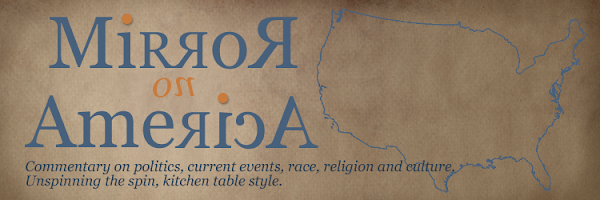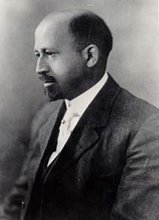
Correction: Black Soldiers on the Beaches of Normandy France. Exact unit and date are unknown.
Photo courtesy of Alice Mills
From the NYDailyNews:
All-black battalion that landed in Normandy, France on D-Day to be honored on anniversary of siege
By Linda Hervieux
Special to The News
Friday, June 5th 2009, 10:40 AM
CAEN, France - William Garfield Dabney, a 20-year-old enlistee, landed on the beaches of Normandy 65 years ago Saturday. Tethered to his waist was a bomb-armed helium balloon, meant to bring down a German dive bomber.
George Davidson, then 22, ferried messages between American commanders under the cover of night, dodging enemy fire with nothing but his wits to guide him.
Both men, members of the same all-black unit, survived the bloody D-Day landings that launched the Allied liberation of France. But because they were black, they disappeared into oblivion - a historic wrong that at last is being rectified.
Dabney on Friday will be among 50 U.S. veterans awarded the Legion of Honor, France's highest decoration, in Paris. The vets will return to Normandy tomorrow for the official D-Day ceremony with President Obama and French President Nicolas Sarkozy.
"The whole group should have been decorated," Bill Davidson, of Waynesburg, Pa., said of his father, who died in 2002. "The contribution of blacks has never been acknowledged."
Few of the 900,000 African-American vets who fought in World War II received medals. Photos of black soldiers were long conspicuously missing from exhibits commemorating major World War II battlefields.
Rest of article at link above.
---------------------------------------------------
From The Telegraph (UK):
African-American D-Day veterans celebrate Barack Obama's trip to Normandy
As America's first black president attends D-Day commemmorations in Normandy, the Second World War's forgotten African-American soldiers say they enjoyed more freedom in Britain in the 1940s than in the segregated United States.
By Philip Sherwell in New York
Published: 9:00AM BST 06 Jun 2009
They have long been the forgotten heroes of D-Day, the African American military personnel who stormed ashore and risked their lives for a country that still treated them as second-class citizens.
Their faces were missing from the Hollywood films that heaped glory on US forces and and their stories were missing from the books, exhibitions and museums that commemorated the Normandy landings.
But with President Barack Obama, the country’s first African American commander-in-chief, in France for the 65th anniversary celebrations of D-Day on Saturday, black veterans of the segregated US army believe their role is finally being acknowledged.
“Where we were in The Longest Day or Saving Private Ryan?” asked Charles Sprowl, 87, referring to two of the best-known films about the events of June 6, 1944. “Where we were we in the history books?” The former corporal in the 490th Port Battalion, who dodged German bullets and rockets as he carried supplies ashore on Utah beach that day, believes that oversight is belatedly being put right.
“I think people are finally realising that there were African Americans there too and how important we were in the operation, but it’s been a long time, too long.”
For Mr Sprowl, who has lived his whole life in Dalston, Georgia, the biggest shock of his wartime service was not the carnage on the beaches of Normandy but his experience in the months before the invasion when he was stationed in Maghull, Merseyside.
“We would go in to Liverpool and we were treated like normal people,” he said. “There was no segregation and we could go where we wanted and do what we wanted. We went dancing in the Grafton Ballroom and shopping on Whitechapel like everyone else.
“My time in England was the first time I had really felt free in my life. And I wondered why another country was treating us better than our own country, better than the country we were fighting for.”
Rest of Article at link above.

African-American troops arriving in Cherbourg, France, in 1944. There were nearly 30,000African-American troops in the strategic port city.
Photo courtesy of Alice Mills

A driver in Cherbourg, France, in 1944. There were nearly 30,000African-American troops in the strategic port city.
Photo courtesy of Alice Mills

A French boy, around 10, poses in a Jeep with US soldiers. “For me this is a memory full of tenderness,” said the boy's sister, who provided the photo to researcher Alice Mills.
Photo courtesy of Alice Mills [Eds. No ID available on boy or sister]. The original source of photo was Ms. Simone Dherouville of Normandy France. The exact date that the photo was taken is unknown, but it is believed to be from the early days of the Normandy invasion.

The all-black 320th Battalion prepares to launch balloons armed with bombs to deter German planes above the beaches of Normandy, France, in June 1944.
Photo courtesy of Alice Mills

Gen. Dwight D. Eisenhower speaks with a black corporal in Cherbourg, France, on Feb. 21, 1945.
Photo courtesy of Alice Mills
Note: The Above photos were collected and researched by Alice Mills, from the University of Caen, France. All photos (except the boy in Jeep) are from the National Archives.















1 comment:
These photos are wonderful. My grandfather, Edward D. Crockett, M.D., served in the Medical Corps as a Captain in various battalions that went to North Africa and Italy during WWII. I am developing a timeline for his service and am transcribing all of his letters to my grandmother. But, I have yet to find many photos. So, it is great to see these. I hope that more Americans learn about the brave service of these segregated battalions during WWII before Truman de-segregated the military services. Thanks, Alice, for sharing these!
Sharon Crockett
Post a Comment